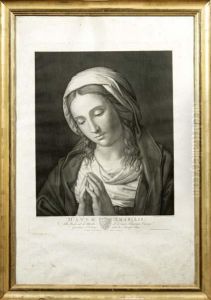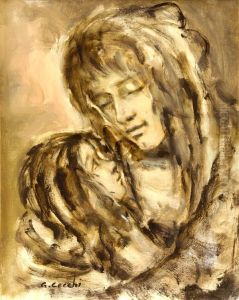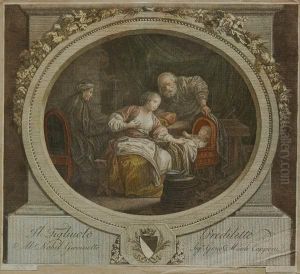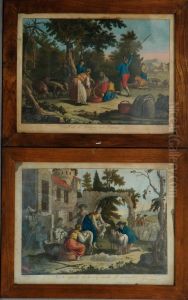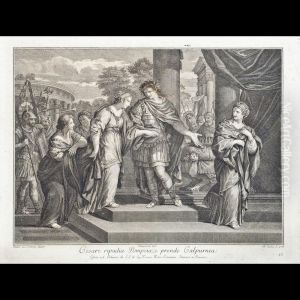Giovanni Battista Cecchi Paintings
Giovanni Battista Cecchi was an Italian artist, primarily known for his work in the late-Baroque and early-Neoclassical periods. Born in the mid-18th century, Cecchi's exact birth date is not well-documented, with sources suggesting he was born in either 1748 or 1749. He passed away in 1815. His contributions to art were shaped by the cultural shifts of his time, as Europe was transitioning from the ornate styles of the Baroque to the more restrained and classical elements of Neoclassicism.
Cecchi's early life and training are not extensively documented, which is not uncommon for artists of his era. However, it is likely that he received his artistic education in Italy, which was a center for artistic training during the 18th century. Italy was home to many influential art academies and workshops where young artists could learn from established masters. Cecchi would have been exposed to a rich tradition of Italian art, including the works of Renaissance and Baroque masters.
As an artist, Cecchi worked in various mediums, including painting and decorative arts. He was part of the generation of artists who were active during the reign of the Grand Duchy of Tuscany, under the rule of the House of Lorraine, which had succeeded the Medici as the ruling family of Tuscany. This period was marked by a renewal of interest in classical antiquity, which greatly influenced the artistic production of the time.
Cecchi's work is characterized by a combination of Baroque dynamism and Neoclassical clarity. His paintings often featured harmonious compositions, clear lines, and a balanced use of light and shadow, reflecting the evolving aesthetic preferences of the period. While Cecchi may not be as widely recognized as some of his contemporaries, his art represents the transitional phase between two major artistic movements and offers valuable insight into the cultural and artistic developments of his time.
Unfortunately, specific details about Cecchi's career, including notable commissions, influential patrons, or major works, are scarce due to the limited historical records. Nevertheless, his contributions to the Italian art scene of the late 18th and early 19th centuries help to fill in the broader picture of the era's artistic landscape. After his death in 1815, Cecchi's legacy would have been carried on by the students and followers who continued to propagate the styles and techniques that he and his contemporaries developed.
